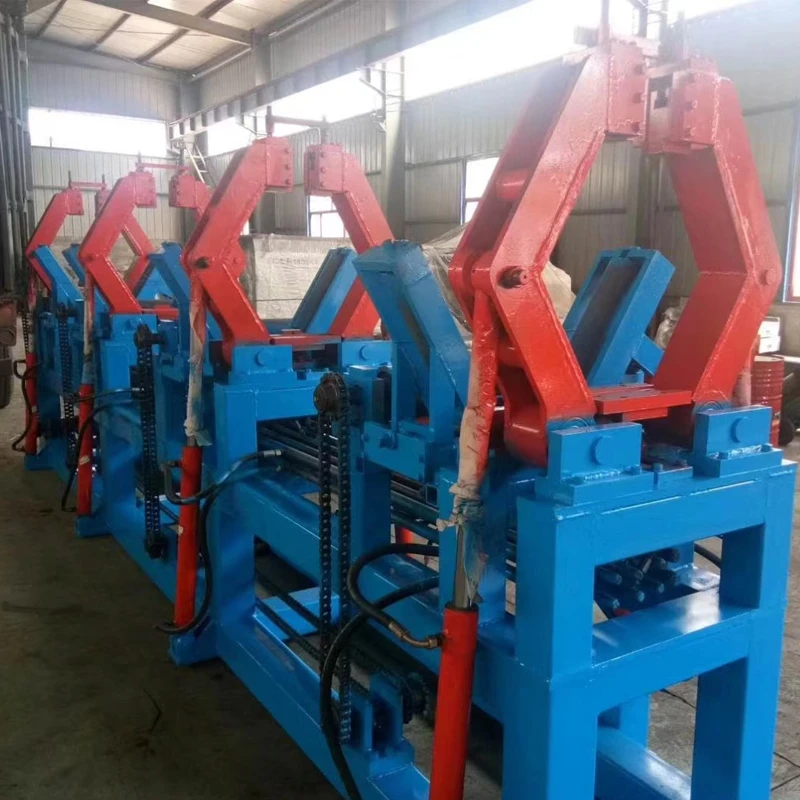Optimizing Tube Manufacturing with Advanced Processing Technology Techniques
The Evolution and Significance of Tube Processing Machines
In the modern manufacturing landscape, tube processing machines play a pivotal role in various industries, from automotive and aerospace to construction and plumbing. These machines are designed to cut, bend, form, and weld tubes made from different materials, including metals and plastics. Their significance cannot be overstated as they enhance efficiency, improve accuracy, and ensure consistent quality in tube fabrication.
Historical Context
The history of tube processing can be traced back to the industrial revolution when the demand for metal pipes surged due to advancements in technology and infrastructure. Initially, tube processing was done manually, which was labor-intensive and prone to errors. However, with the advent of specialized machinery in the mid-20th century, the tube processing industry began to witness a transformation. Automation technology gradually became more prevalent, allowing for the production of more intricate designs and higher volumes of output.
Types of Tube Processing Machines
Several types of tube processing machines are utilized in manufacturing, each serving specific purposes
1. Tube Cutting Machines These machines are designed to precisely cut tubes to required lengths. They can handle various materials such as stainless steel, aluminum, and plastic. Advanced models incorporate laser technology, which provides a clean cut with minimal material wastage.
2. Tube Bending Machines Tube bending is essential for applications requiring curved pipes. Bending machines come in various forms, including rotary draw benders and mandrel benders, allowing the operator to create different radius bends without compromising the tube's integrity.
3. Tube Forming Machines These machines shape tubes into desired profiles through various forming techniques. Processes such as roll forming, stretch forming, and hydroforming are employed to achieve complex geometries essential for specific applications.
4. Tube Welding Machines Welding is crucial for joining sections of tube. Tube welding machines can employ several techniques such as TIG (Tungsten Inert Gas), MIG (Metal Inert Gas), and laser welding, ensuring strong and durable connections.
tube processing machine

Technological Advancements
The evolution of tube processing machines has been heavily influenced by technological advancements. The integration of computer numerical control (CNC) allows for higher precision in cuts and bends. CNC machines can be programmed to execute complex designs with minimal human intervention, reducing the chances of errors significantly. Furthermore, the implementation of automation and robotics in tube processing lines has led to increased production rates and improved safety.
In recent years, the development of software like CAD (Computer-Aided Design) and CAM (Computer-Aided Manufacturing) has revolutionized how tube processing is approached. Manufacturers can design intricate tube layouts and accurately simulate various processing scenarios before production begins, thus optimizing the use of materials and labor.
Applications and Industries
The versatility of tube processing machines means they are utilized across multiple sectors. In the automotive industry, tube processing machines are used to manufacture exhaust systems, frames, and chassis components. The aerospace sector relies on these machines to create lightweight yet durable tubing for aircraft and spacecraft. In the construction industry, tubes are essential for plumbing, HVAC systems, and structural elements.
Challenges and Future Directions
While tube processing machines offer numerous advantages, they are not without challenges. High initial costs for advanced machines can be a barrier for small manufacturers. Additionally, the rapid pace of technological advancements requires companies to continually adapt and invest in training for their workforce.
Looking forward, the future of tube processing machines is promising. The ongoing development of smart manufacturing technologies, including IoT (Internet of Things) and machine learning, will enable manufacturers to analyze data and optimize production processes in real-time. Sustainability considerations are also likely to influence future designs, with an increasing focus on energy-efficient machines and environmentally friendly materials.
Conclusion
In conclusion, tube processing machines are critical in modern manufacturing, significantly enhancing productivity and precision. As industries continue to evolve, the machines that process tubes will adapt and innovate, ensuring they meet the demands of tomorrow's manufacturing challenges. Whether through advancements in technology or shifts towards sustainable practices, tube processing machines will undoubtedly remain at the forefront of industrial progress.
-
High Frequency Straight Seam Welded Pipe Production Line-BzZhou Xinghua Machinery Equipment Manufacturing Co., LTD.|line pipe steel&welded gas pipeNewsJul.30,2025
-
High Frequency Straight Seam Welded Pipe Production Line-BzZhou Xinghua Machinery Equipment Manufacturing Co., LTD.|High Precision&Automated SolutionsNewsJul.30,2025
-
High Frequency Straight Seam Welded Pipe Production Line - BzZhou Xinghua Machinery Equipment Manufacturing Co., Ltd.NewsJul.30,2025
-
High Frequency Straight Seam Welded Pipe Production Line-BzZhou Xinghua Machinery Equipment Manufacturing Co., LTD.|Precision Welding, High EfficiencyNewsJul.30,2025
-
High Frequency Straight Seam Welded Pipe Production Line|BzZhou Xinghua|Precision Welding&EfficiencyNewsJul.30,2025
-
High Frequency Straight Seam Welded Pipe Production Line - BzZhou Xinghua|Precision Engineering&EfficiencyNewsJul.30,2025


